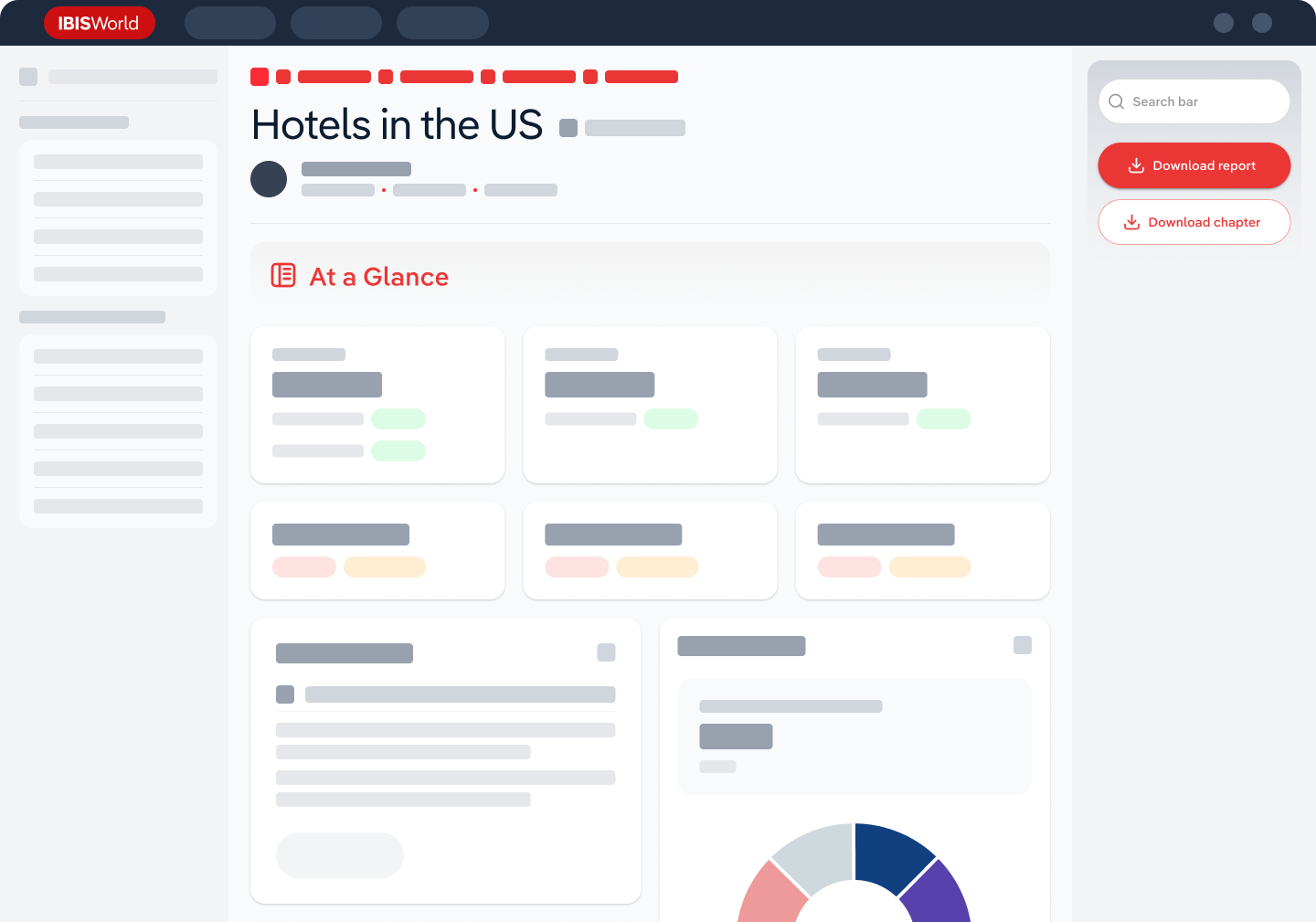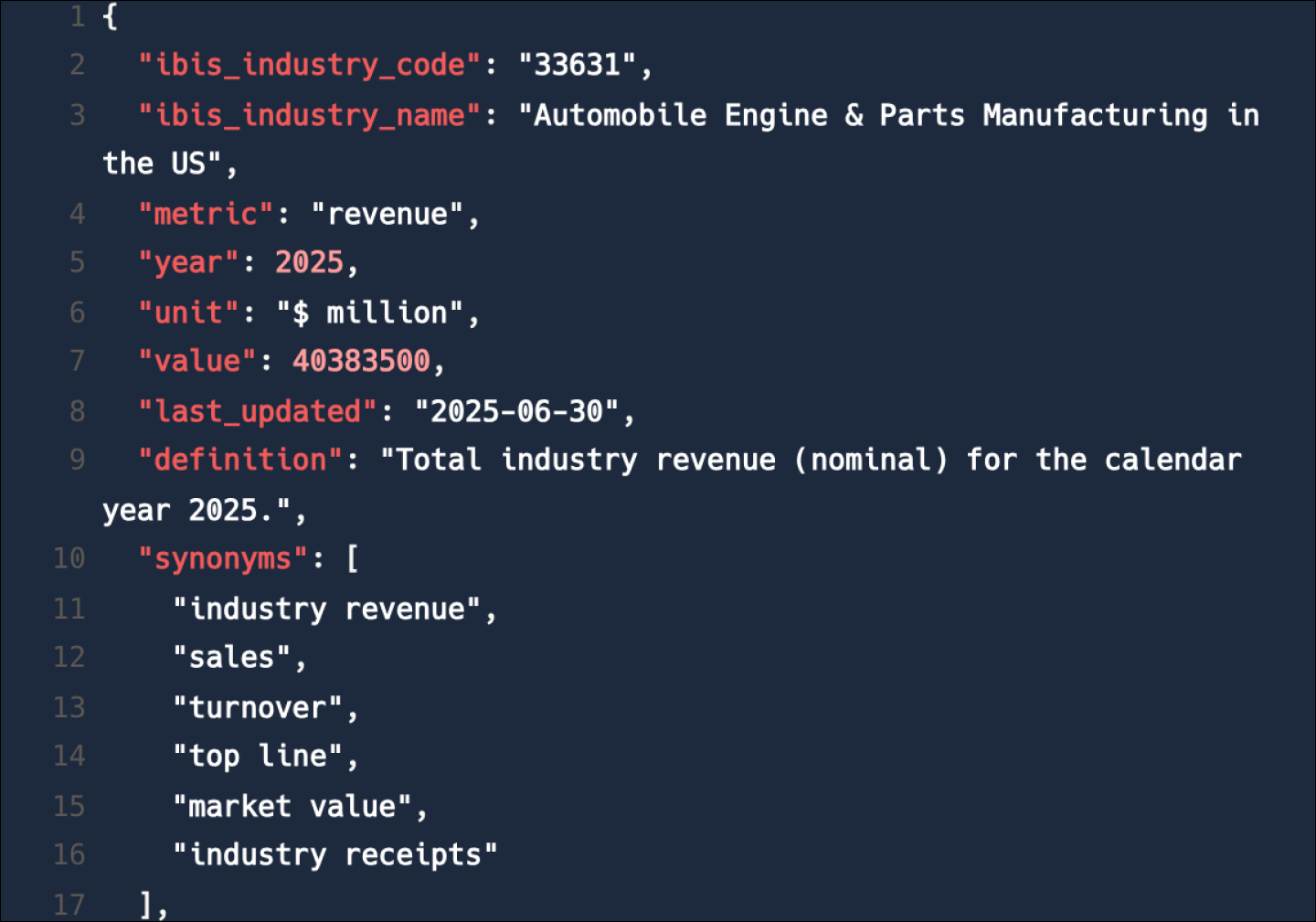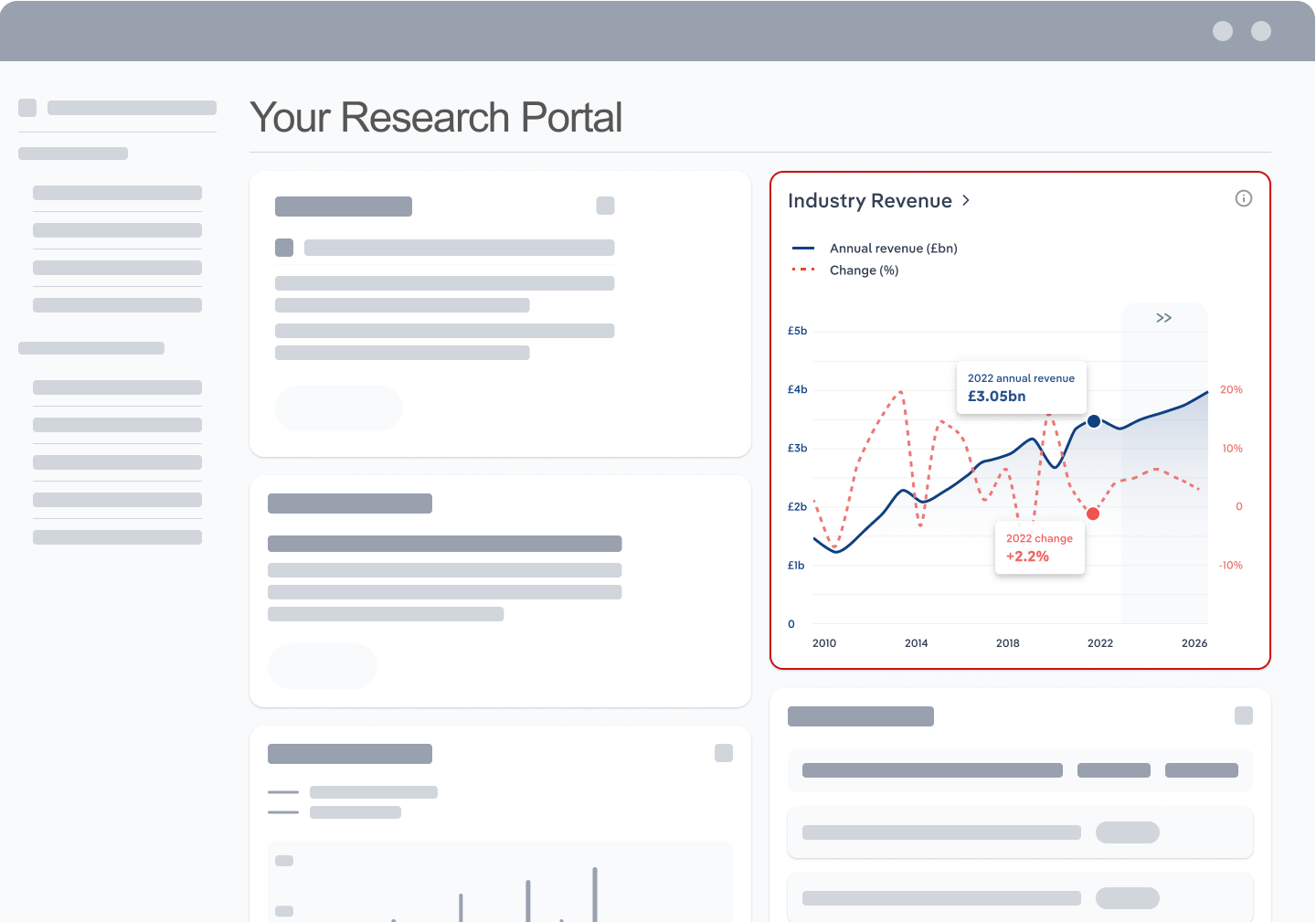Industry Statistics and Trends
Market size and recent performance (2015-2030)
Industry revenue has declined at a CAGR of 1.7 % over the past five years, to reach an estimated $15.4bn in 2025.
Trends and Insights
California’s environmental regulations drive divestment and reshape pipeline industry dynamics
- California has implemented some of the nation’s toughest environmental and fuel standards, including strict emissions laws, well setback requirements and climate accountability lawsuits. These regulations, combined with community buffer zones and profit-penalty laws, have significantly increased costs, risks and legal exposure for oil producers and refiners. Major oil companies like ExxonMobil and Chevron have scaled back or fully divested their California operations, with Phillips 66 planning to close its Los Angeles refinery by late 2025. After a century-long relationship, both businesses wrote down $5.0 billion worth of assets to move their operations to Texas.
- Additional trends and insights available with purchase
Industry outlook (2025-2030)
Market size is projected to grow over the next five years.
Trends and Insights
Operators maintain a strong liquidity outlook for 2025, but they also face higher risks than the broader transportation industry
- Expansion to strategic locations is still needed to accommodate oil transportation between terminals, refineries and petrochemical factories. Recent investment has focused on building interstate and intrastate pipelines for producers to tap into key export terminals located on the Gulf Coast. At the same time, the region continues to dominate the oil market. Elevated interest rates resulted in skyrocketing borrowing costs. Lower liquidity will cause less established companies to hold off on expansion plans and likely drive a wave of consolidations as market leaders capitalize on economic conditions.
Biggest companies in the Oil Pipeline Transportation in the US
| Company | Market Share (%)
2025 | Revenue ($m)
2025 | Profit ($m)
2025 | Profit Margin (%)
2025 |
|---|---|---|---|---|
Energy Transfer, Lp | 2,750.6 | 246.6 | 9.0 | |
Tc Energy Corporation | 1,853.1 | 944.7 | 51.0 | |
Plains All American Pipeline Lp | 1,641.9 | 99.6 | 6.1 |
To view the market share and analysis for all 6 top companies in this industry, view purchase options.
Products & Services Segmentation
Industry revenue is measured across several distinct product and services lines, including Imported crude oil transport, Lower 48 states crude oil transport and Alaskan crude oil transport. Imported crude oil transport is the largest segment of the Oil Pipeline Transportation in the US.
Trends and Insights
Imported crude oil still has to be distributed through the oil pipelines
- Imported oil typically arrives at major US ports, particularly those with large refining capacities like those in the Gulf Coast. Once oil tankers offload their cargo, oil is transported into large storage tanks before being distributed to pipelines via terminals.
- More insights available in the full report
Table of Contents
About this industry
Industry definition
Oil pipelines are the primary and most reliable method of distributing oil throughout the United States. Operators of oil pipelines have established vast infrastructure to move oil from offshore fields to refineries and petrochemical plants, where it is processed into other products like petroleum and plastic.
What's included in this industry?
Products and services covered in the Oil Pipeline Transportation industry in the United States include Transporting imported crude oil, Transporting crude oil to Alaska, Transporting crude oil to the lower 48 states and Transporting other materials and performing miscellaneous services.Companies
Companies covered in the Oil Pipeline Transportation industry in the United States include Energy Transfer, Lp, Tc Energy Corporation and Plains All American Pipeline Lp.Purchase this report to view all 6 major companies in this industry.
Related Terms
Related terms covered in the Oil Pipeline Transportation industry in the United States include oil sands, tankers, hydraulic fracturing, gathering lines and trunk line.Industry Code
NAICS 48611 - Oil Pipeline Transportation in the US
Performance
Get an indication of the industry's health through historical, current and forward-looking trends in the performance indicators that make or break businesses.
Analyst insights
Steady production in major oil basins and demand for efficient transport are supporting pipeline industry growth. Companies are investing in expansion projects and upgrading ...
In this chapter (4)
- Current Performance
- Outlook
- Volatility
- Life Cycle
Key metrics
- Annual Revenue, Recent Growth, Forecast, Revenue Volatility
- Number of Employees, Recent Growth, Forecast, Employees per Business, Revenue per Employee
- Number of Businesses, Recent Growth, Forecast, Employees per Business, Revenue per Business
- Total Profit, Profit Margin, Profit per Business
Charts
- Revenue, including historical (2015-2024) and forecast (2025-2030)
- Employees, including historical (2015-2024) and forecast (2025-2030)
- Businesses, including historical (2015-2024) and forecast (2025-2030)
- Profit, including historical (2015-2025)
- Industry Volatility vs. Revenue Growth
- Industry Life Cycle
Detailed analysis
- Trends in supply, demand and current events that are driving current industry performance
- Expected trends, economic factors and ongoing events that drive the industry's outlook
- Key success factors for businesses to overcome volatility
- How contribution to GDP, industry saturation, innovation, consolidation, and technology and systems influence the industry's life cycle phase.
Products and Markets
Learn about an industry's products and services, markets and trends in international trade.
Analyst insight
Domestic transportation makes up the bulk of pipeline operators’ revenue. While imported crude oil is still essential, volumes continue to inch down.
In this chapter
- Products & Services
- Major Markets
Key metrics
- Largest market segment and value in 2025
- Product innovation level
Charts
- Products & services segmentation in 2025
- Major market segmentation in 2025
Detailed analysis
- Trends impacting the recent performance of the industry's various segments
- Innovations in the industry's product or service offering, specialization or delivery method
- Key factors that successful businesses consider in their offerings
- Buying segments and key trends influencing demand for industry products and services
Geographic Breakdown
Discover where business activity is most concentrated in an industry and the factors driving these trends to find opportunities and conduct regional benchmarking.
Analyst insights
Texas is one of the largest energy hubs in the country. It leads the nation in crude oil production and holds over a quarter of its oil pipelines. Texas also has the most oil...
In this chapter (1)
- Business Locations
Charts
- Share of revenue, establishment, wages and employment in each state
- Share of population compared to establishments in each region in 2025
Tables
- Number and share of establishments in each state in 2025
- Number and share of revenue each state accounts for in 2025
- Number and share of wages each state accounts for in 2025
- Number and share of employees in each state in 2025
Detailed analysis
- Geographic spread of the industry across North America, and trends associated with changes in the business landscape
- Key success factors for businesses to use location to their advantage
Competitive Forces
Get data and insights on what's driving competition in an industry and the challenges industry operators and new entrants may face, with analysis built around Porter's Five Forces framework.
Analyst insights
Only a few major pipeline operators exist. High capital expenditures limit the number of companies with the resources to maintain and operate oil pipelines.
In this chapter (4)
- Concentration
- Barriers to Entry
- Substitutes
- Buyer & Supplier Analysis
Key metrics
- Industry concentration level
- Industry competition level and trend
- Barriers to entry level and trend
- Substitutes level and trend
- Buyer power level and trend
- Supplier power level and trend
Charts
- Market share concentration among the top 4 suppliers from 2020-2025
- Supply chain including upstream supplying industries and downstream buying industries, flow chart
Detailed analysis
- Factors impacting the industry’s level of concentration, such as business distribution, new entrants, or merger and acquisition activity.
- Key success factors for businesses to manage the competitive environment of the industry.
- Challenges that potential industry entrants face such as legal, start-up costs, differentiation, labor/capital intensity and capital expenses.
- Key success factors for potential entrants to overcome barriers to entry.
- Competitive threats from potential substitutes for the industry’s own products and services.
- Key success factors for how successful businesses can compete with substitutes.
- Advantages that buyers have to keep favorable purchasing conditions.
- Advantages that suppliers have to maintain favorable selling conditions.
- Key success factors for how businesses can navigate buyer and supplier power.
Companies
Learn about the performance of the top companies in the industry.
Analyst insights
Enbridge expanded its domestic footprint by acquiring Energy Partners LP’s crude oil terminal facility for $132.0 million. Located in Cushing, OK, the facility contains 34 ta...
In this chapter
- Market Share Concentration
- Companies
- Company Spotlights
Charts
- Industry market share by company in 2021 through 2025
- Major companies in the industry, including market share, revenue, profit and profit margin in 2025
- Overview of Energy Transfer, Lp's performance by revenue, market share and profit margin from 2019 through 2025
- Overview of Tc Energy Corporation's performance by revenue, market share and profit margin from 2019 through 2025
- Overview of Plains All American Pipeline Lp's performance by revenue, market share and profit margin from 2019 through 2025
- Overview of revenue, market share and profit margin trend for 3 additional companies
Detailed analysis
- Description and key data for Energy Transfer, Lp, and factors influencing its performance in the industry
- Description and key data for Tc Energy Corporation, and factors influencing its performance in the industry
- Description and key data for Plains All American Pipeline Lp, and factors influencing its performance in the industry
- Description, key data and performance trends for 3 additional companies
External Environment
Understand the demographic, economic and regulatory factors that shape how businesses in an industry perform.
Analyst insights
Industry volatility is fueled by crude oil price swings, changing policies and local opposition to new projects. Successful operators diversify market reach and services, bui...
In this chapter
- External Drivers
- Regulation & Policy
- Assistance
Key metrics
- Regulation & policy level and trend
- Assistance level and trend
Charts
- Regulation & Policy historical data and forecast (2015-2030)
- Assistance historical data and forecast (2015-2030)
Detailed analysis
- Demographic and macroeconomic factors influencing the industry, including Regulation & Policy and Assistance
- Major types of regulations, regulatory bodies, industry standards or specific regulations impacting requirements for industry operators
- Key governmental and non-governmental groups or policies that may provide some relief for industry operators.
Financial Benchmarks
View average costs for industry operators and compare financial data against an industry's financial benchmarks over time.
Analyst insights
The necessity of vast infrastructure raises capital costs for pipeline operators. This intense level of equipment use leads to high depreciation costs for pipeline owners.
In this chapter
- Cost Structure
- Financial Ratios
- Key Ratios
Key metrics
- Profit margin, and how it compares to the sector-wide margin
- Average wages, and how it compares to the sector-wide average wage
- Largest cost component as a percentage of revenue
- Industry average ratios for days' receivables, industry coverage and debt-to-net-worth ratio
Charts
- Average industry operating costs as a share of revenue, including purchases, wages, depreciation, utilities, rent, other costs and profit in 2025
- Average sector operating costs as a share of revenue, including purchases, wages, depreciation, utilities, rent, other costs and profit in 2025
- Investment vs. share of economy
Data tables
- Industry Multiples (2018-2023)
- Industry Tax Structure (2018-2023)
- Income Statement (2018-2023)
- Balance Sheet (2018-2023)
- Liquidity Ratios (2018-2023)
- Coverage Ratios (2018-2023)
- Leverage Ratios (2018-2023)
- Operating Ratios (2018-2023)
- Cash Flow & Debt Service Ratios (2015-2030)
- Revenue per Employee (2015-2030)
- Revenue per Enterprise (2015-2030)
- Employees per Establishment (2015-2030)
- Employees per Enterprise (2015-2030)
- Average Wage (2015-2030)
- Wages/Revenue (2015-2030)
- Establishments per Enterprise (2015-2030)
- IVA/Revenue (2015-2030)
- Imports/Demand (2015-2030)
- Exports/Revenue (2015-2030)
Detailed analysis
- Trends in the cost component for industry operators and their impact on industry costs and profitability
Key Statistics
Industry Data
Data Tables
Including values and annual change:
- Revenue (2015-2030)
- IVA (2015-2030)
- Establishments (2015-2030)
- Enterprises (2015-2030)
- Employment (2015-2030)
- Exports (2015-2030)
- Imports (2015-2030)
- Wages (2015-2030)
Top Questions Answered
Unlock comprehensive answers and precise data upon purchase. View purchase options.
What is the market size of the Oil Pipeline Transportation industry in the United States in 2025?
The market size of the Oil Pipeline Transportation industry in the United States is $15.4bn in 2025.
How many businesses are there in the Oil Pipeline Transportation industry in the United States in 2025?
There are 72 businesses in the Oil Pipeline Transportation industry in the United States, which has declined at a CAGR of 2.1 % between 2020 and 2025.
How may import tariffs affect the Oil Pipeline Transportation industry in the United States?
The Oil Pipeline Transportation industry in the United States is unlikely to be materially impacted by import tariffs with imports accounting for a low share of industry revenue.
How may export tariffs affect the Oil Pipeline Transportation industry in the United States?
The Oil Pipeline Transportation industry in the United States is unlikely to be materially impacted by export tariffs with exports accounting for a low share of industry revenue.
Has the Oil Pipeline Transportation industry in the United States grown or declined over the past 5 years?
The market size of the Oil Pipeline Transportation industry in the United States has been declining at a CAGR of 1.7 % between 2020 and 2025.
What is the forecast growth of the Oil Pipeline Transportation industry in the United States over the next 5 years?
Over the next five years, the Oil Pipeline Transportation industry in the United States is expected to grow.
What are the biggest companies in the Oil Pipeline Transportation industry in the United States?
The biggest companies operating in the Oil Pipeline Transportation industry in the United States are Energy Transfer, Lp, Tc Energy Corporation and Plains All American Pipeline Lp
What does the Oil Pipeline Transportation industry in the United States include?
Transporting imported crude oil and Transporting crude oil to Alaska are part of the Oil Pipeline Transportation industry in the United States.
Which companies have the highest market share in the Oil Pipeline Transportation industry in the United States?
The company holding the most market share in the Oil Pipeline Transportation industry in the United States is Energy Transfer, Lp.
How competitive is the Oil Pipeline Transportation industry in the United States?
The level of competition is moderate and steady in the Oil Pipeline Transportation industry in the United States.
Methodology
How are IBISWorld reports created?
IBISWorld has been a leading provider of trusted industry research for over 50 years to the most successful companies worldwide. With offices in Australia, the United States, the United Kingdom, Germany and China, we are proud to have local teams of analysts that conduct research, data analysis and forecasting to produce data-driven industry reports.
Our analysts start with official, verified and publicly available sources of data to build the most accurate picture of each industry. Analysts then leverage their expertise and knowledge of the local markets to synthesize trends into digestible content for IBISWorld readers. Finally, each report is reviewed by one of IBISWorld’s editors, who provide quality assurance to ensure accuracy and readability.
IBISWorld relies on human-verified data and human-written analysis to compile each standard industry report. We do not use generative AI tools to write insights, although members can choose to leverage AI-based tools within the platform to generate additional analysis formats.
What data sources do IBISWorld analysts use?
Each industry report incorporates data and research from government databases, industry-specific sources, industry contacts, and our own proprietary database of statistics and analysis to provide balanced, independent and accurate insights.
Key data sources in the US include:
- US Census Bureau
- US Bureau of Labor Statistics
- US International Trade Commission
Analysts also use industry specific sources to complement catch-all sources, although their perspective may focus on a particular organization or representative body, rather than a clear overview of all industry operations. However, when balanced against other perspectives, industry-specific sources provide insights into industry trends.
These sources include:
- Industry and trade associations
- Industry federations or regulators
- Major industry players annual or quarterly filings
Finally, IBISWorld’s global data scientists maintain a proprietary database of macroeconomic and demand drivers, which our analysts use to help inform industry data and trends. They also maintain a database of statistics and analysis on thousands of industries, which has been built over our more than 50-year history and offers comprehensive insights into long-term trends.
How does IBISWorld forecast its data?
IBISWorld’s analysts and data scientists use the sources above to create forecasts for our proprietary datasets and industry statistics. Depending on the dataset, they may use regression analysis, multivariate analysis, time-series analysis or exponential smoothing techniques to project future data for the industry or driver. Additionally, analysts will leverage their local knowledge of industry operating and regulatory conditions to impart their best judgment on the forecast model.
IBISWorld prides itself on being a trusted, independent source of data, with over 50 years of experience building and maintaining rich datasets and forecasting tools. We are proud to be the keystone source of industry information for thousands of companies across the world.
Learn more about our methodology and data sourcing on the Help Center.










